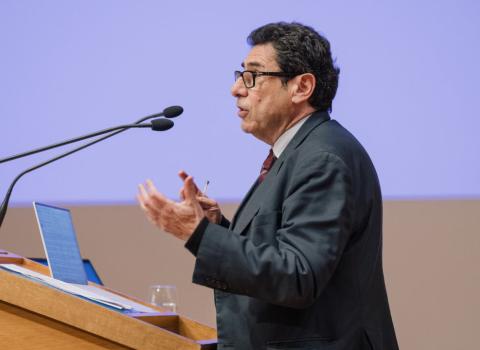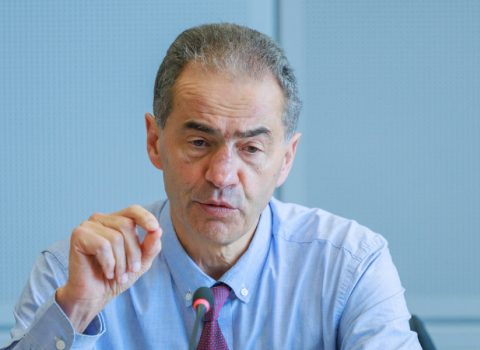Mauro Nisoli has been awarded the Politecnico di Milano’s first ERC Synergy Grant, offering almost 12 million Euro of funding over 6 years.
Mauro Nisoli (Department of Physics) and his colleagues Fernando Martín (IMDEA and Universidad Autónoma de Madrid) and Nazario Martín (Universidad Complutense de Madrid) have been awarded the Politecnico di Milano’s first ERC Synergy Grant, offering almost 12 million Euro of funding over 6 years. Of these, our university will be allocated 5 million.
The TOMATTO project (the ultimate time scale in organic molecular opto-electronics, the attosecond) will explore what happens within individual molecules immediately after interaction with light. This is uncharted territory, since light gives rise to events that are not readily accessible, happening as they do in extremely short time scales, in the order of attoseconds (that is, a few billionths of billionths of a second).
To this end, a new leading-edge attosecond laboratory, managed by Nisoli, will be built at the Politecnico di Milano’s Attosecond Research Center. In addition, a new supercomputer, incorporating the latest advances in hardware and software development, will be installed at the Computer Center of Universidad Autónoma de Madrid, and new organic opto-electronic materials will be synthesised at Universidad Complutense de Madrid.
The research conducted within the scope of TOMATTO, coordinated by a team of experts in laser technologies, in the synthesis of new organic materials and in computational methods, aims to film the light-induced motion of electrons in molecules with an unprecedented temporal resolution. The end goal is to engineer the molecular response in order to be able to produce materials with improved opto-electronic characteristics.
"The ability to understand and control light-induced processes in the order of attoseconds opens up new research areas beyond the scope of this project", says Mauro Nisoli.
"In addition to the expected applications in organic opto-electronics and, more generally, in molecular electronics, I also expect significant applications in the photovoltaic field and in the study of light-induced processes in a variety of natural and artificial structures, ranging from biological systems to advanced materials with new functionalities.", adds Nisoli.
Like any frontier research, TOMATTO could potentially lead to important and not easily foreseeable discoveries and advances.
With TOMATTO, the Politecnico di Milano confirms its position as Italy’s leading university, with 400 Horizon 2020 projects funded to date.
This article was first published by Politecnico di Milano.





 A unique international forum for public research organisations and companies to connect their external engagement with strategic interests around their R&D system.
A unique international forum for public research organisations and companies to connect their external engagement with strategic interests around their R&D system.